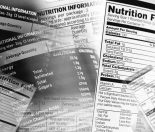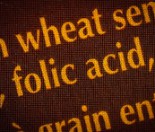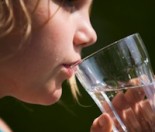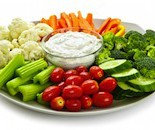This article, Nutritional Information Panel, contains vital information on reading the Nutrition Information Panel in the foods we buy for our children.
When looking at a food label there are two important parts to consider –
- the ingredients list
- the nutrition information panel – see link below.
Often you will need to look at both to get the full picture of how a food stacks up.
The Nutrition Information Panel (NIP)
This is now required on most foods in New Zealand and must include certain information.
Number of servings
It needs to state the number of servings of food in the package (note for instance that a family-sized bag of potato chips is meant to serve 8 people!). The serving size also needs to be clearly stated in units such as grams, cups or, for items like bread or biscuits, the number of slices or biscuits.
Amount of energy
The NIP must contain information on the amount of energy in kilojoules (kJ), protein, total fat, saturated fat, carbohydrate, sugars, sodium (salt).
This information must be presented as both per serving and also per 100 grams, or 100 ml if a liquid.
Clarifying statements
If a manufacturer makes a claim like, ‘a good source of iron’, then the amount of that nutrient found in the product must be stated in the NIP.
Reading the Nutritional Information Panel or NIP
The NIP can sometimes look busy and confusing – but if you know what to look for you can become a dab hand at scanning one quickly and deciding if the product is a good choice. It is a great way of comparing one product with another.
- When reading the NIP look at either the ‘per serving’ or the ‘100 gram’ panel – this way you are comparing apples with apples.
- It is difficult to compare two products where the serving size is different – for instance one breakfast cereal may have a stated serving size of 30 grams another might say 50 grams – and the serving size might have nothing to do with the amount you pour into your bowl.
- Using the ‘per serving’ can be useful when comparing foods that are prepackaged in individual serves such as muesli bars, as long as you only eat one serving at a time.
- It is important to realise that a low fat product can sometimes have a lot of sugar added to it – this can push the total energy value up. So don’t forget to look at the energy value of a food not just the fat and sugar content.
Unsweetened muesli versus sweetened muesli
Let’s look at a NIP for each product looking at the 100g panel – because even though both serving sizes are the same you may not pour 50 grams into your bowl!
| Product A | ||
Unsweetened natural muesli |
||
| Nutrition Information | ||
| Serving size 50 g (approx ½ cup)Servings per package 11 | ||
Per serve |
Per 100g |
|
| Energy kJcal | 790189 | 1580378 |
| Protein (g) | 6.4 | 12.8 |
| Fat – Total (g)Saturated (g) | 2.50.9 | 5.01.8 |
| Carbohydrate Total (g) | 32.9 | 65.8 |
| – sugars (g) | 8.5 | 16.9 |
| Sodium (mg) | 60 | 74 |
| Dietary Fibre (g) | 3.9 | 7.7 |
| Ingredients Product A (These are listed separately to the NIP)Cereals (71%) [Oats, barley, Wheat, Wheatgerm] Fruit (16%) [sultanas, raisins, apricot pieces, dried apple] skim milk powder coconut, wheat maltodextrin … |
| Product B | ||
Toasted Muesli |
||
| Nutrition Information | ||
| Serving size 50 g (approx ½ cup)Servings per package 15 | ||
Per serve |
Per 100g |
|
| Energy kJcal | 940225 | 1880450 |
| Protein (g) | 5.3 | 10.5 |
| Fat – Total (g)Saturated (g) | 9.84.1 | 19.68.2 |
| Carbohydrate Total (g) | 26.3 | 52.5 |
| – sugars (g) | 12.4 | 42.8 |
| Sodium (mg) | 178 | 355 |
| Dietary Fibre (g) | 5.2 | 10.3 |
| Ingredients product B(These are listed separately to the NIP)Cereals (58%) [oats, wheatgerm], sugar, fruit 12% [sultanas, raisins, apricot pieces], vegetable oils, coconut, glucose syrup, honey, sesame seeds… |
Fat content
- Product A is lower in energy than product B by 300 kJ. This is due to product A being much lower in total fat.
- Product B has both a high total fat content and a high proportion of this comes from saturated fat – 42% is saturated fat.
Sugar content
- Product A is lower in sugar (17g) than B (25g).
- By looking at the ingredients list, you can see that fruit has contributed to the sugar content in A, while product B has sugar listed before the fruit and it also has glucose syrup and honey added.
Fibre content
- Both foods are high in fibre – a high fibre food is one that has more than 6 grams of fibre per 100 grams.
Salt content
- It is interesting to note the huge difference in sodium content between the two cereals. A high sodium level means a high salt intake.
- Product B contains 358mg of sodium; therefore it has 895mg (almost 1g) of salt. The recommended daily salt intake is 6 grams per day – product B would contribute a lot of salt to your diet.
Great tips when looking at Nutritional Information Panels
- Generally speaking it is ideal to look for foods with a fat content of less than 10 grams of fat per 100 grams. If this is not possible, then compare products and choose the one with the lowest fat.
- A good goal is to look for foods with no more than 2 grams of saturated fat. Remember – saturated fat can raise cholesterol levels so is considered a harmful fat.
- When looking at the sugar content of the food, do not compare total carbohydrate values, but consider the amount of sugar.
- It is also worth looking at the ingredients list to see if it is added sugar, or sugar coming from a source of fruit. If sugar is coming from a source of fruit, then it is also likely that this will be adding to the fibre content of the food.
- A good goal is to look for foods with less than 10-15 grams sugar per 100g, although if the fruit content is the main source of sugar 20g per 100 grams will be acceptable.
- For packaged foods, sodium must be listed (in milligrams) in the nutrition information panel. To work out how much salt is in a product, multiply the sodium content by 2.5
- While you may not be able to remember all these numbers – the best thing to do is examine a food label and determine how it compares with another, if you are tossing up between products.
Useful Articles:
To understand more about the guidelines for listing Ingredients on food labels, click here.
To understand Food Labelling At a Glance visit our great Kiwi Families article, by mum and dietitian, Fiona Boyle.





